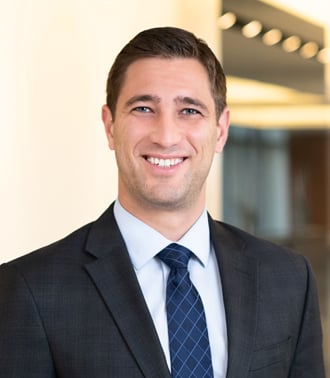Is There Any Daylight Left? The Supreme Court to Weigh In on the Presumption of Reliance in Securities Class Actions
On March 29, 2021, the US Supreme Court heard oral argument in Goldman Sachs Group, Inc. v. Arkansas Teacher Retirement System. As explained in our previous Advisory detailing the Court's decision to grant certiorari, the appeal concerns a defendant's ability to rebut the "Basic presumption,"1 which allows investor plaintiffs to rely on a presumption of class-wide reliance at the class certification stage based on a "fraud on the market theory." More specifically, the petition for certiorari presented two questions for the Court's review: (1) whether defendants may defeat the Basic presumption by showing that the generic nature of the alleged misstatements meant that those statements have no impact on the price of defendant's securities; and (2) whether defendants trying to rebut the Basic presumption bear only the burden of production or also the ultimate burden of persuasion.
The oral argument shed some light on these questions. For one thing, the parties' briefing narrowed the differences between their respective positions, so much so that Chief Justice Roberts asked whether there was even "any daylight" between the parties' positions with respect to whether a court may consider the generic nature of a statement in assessing price impact. Both parties confirmed their agreement that a court can do so, with the only apparent "daylight" being their views on how expert testimony fits into this analysis.
Yet the oral argument also confirmed the challenges that lower courts currently face. As Justice Barrett observed, the "tension" between two of the Court's decisions—Amgen, which held that plaintiffs need only allege (not prove) the materiality of an alleged misstatement at the class certification stage,2 and Halliburton II, which allows defendants to rebut the Basic presumption by showing an alleged misstatement had no impact on the market price of a security3—requires trial courts to "split some very fine hairs" and is "very, very difficult to navigate." Indeed, a number of amici filed briefs seeking the Court's guidance. For petitioner, these included the United States Chamber of Commerce, the Society for Corporate Governance, the Securities and Financial Markets Association, and the American Bankers Association. Respondents were supported by amici for 16 states, among others. And on March 8, 2021, the Supreme Court granted an application by the Acting Solicitor General—who did not support either party but urged the Court to address ambiguities in the Second Circuit's decision—to participate in oral argument.
What Brought the Parties Here
As detailed in our previous Advisory, this litigation has an extended history involving two previous appeals to the US Court of Appeals for the Second Circuit. The US District Court for the Southern District of New York initially certified an investor class, but the Second Circuit reversed, finding that the district court did not properly apply a "preponderance of the evidence" standard to decide whether the Basic presumption had been rebutted. On remand, the district court certified the class again, finding that the investors had successfully invoked the Basic presumption and that petitioner had not rebutted that presumption by a preponderance of the evidence. This time, the Second Circuit affirmed, and the Supreme Court granted certiorari from that decision.
The Basic Presumption and Generic Statements: What Is Left to Decide?
Because the parties' briefs had chiseled away at the first question presented, Chief Justice Roberts kicked off the Court's questions by asking whether there was "any daylight" left between the parties' positions regarding how courts should weigh the "generic nature" of a company's alleged misstatements when deciding whether investors in a class relied on those statements. Other justices echoed this sentiment. Justice Breyer asked, "So why are we hearing that issue," given that "this seems like an area that the more that I read about it, the less that we write, the better." He noted the apparent agreement on the issue whether expert testimony is relevant to the price impact inquiry: "Everybody agrees—take the statement for what it's worth, listen to the experts, and don't check your common sense at the door. That's what judges do." Justice Barrett followed in a similar vein: "It seems to me that you've both moved towards the middle"—petitioner "backed off on how important they think generality is and whether it can be decided categorically" and respondents "also conceded that generality is relevant."
Justice Barrett also asked a series of questions about a decision that she had previously joined while on the Seventh Circuit, In re Allstate Corp. Securities Litigation.4 Allstate addressed the "tension between Amgen and Halliburton II," which "requires the district court to split some very fine hairs" and not think about the "pink elephant," i.e., "how any of this bears" on materiality. In Allstate, the Seventh Circuit ultimately remanded for a more thorough consideration of "all" the evidence bearing on the issue of price impact, finding the district court erred by "embracing Amgen at the expense of Halliburton II."
The parties' apparent agreement on how a defendant may rebut the Basic presumption led to questions regarding the proper disposition of the case. Petitioner, beyond arguing for reversal, suggested in the alternative that the Court could simply remand to the Second Circuit with instructions to re-evaluate whether the Basic presumption was rebutted under the proper legal standard. Respondents, beyond seeking affirmance, accepted Justice Breyer's invitation and argued at one point that the Court could dismiss the case as improvidently granted without authoring an opinion at all. And for its part, the Office of the Solicitor General joined in challenging the Second Circuit's articulation of the proper legal standard, but it did so without supporting either affirmance or reversal. Instead, it suggested that the Court could decide the case for either party, so long as it clarified ambiguity in the Second Circuit's opinion.
Justice Sotomayor addressed another apparent distinction between the parties' positions: to what extent judges can rely on "common sense and intuition" when addressing whether a statement is generic, particularly in the scenario in which that runs contrary to an expert opinion. She queried whether it would be necessary for a judge to "check its gut" in such situations and how to provide guidance to lower courts on this topic. Justice Barrett added a finer point to that question—because the parties agreed that the generality of the alleged misstatements is relevant for deciding price impact, "the only dispute then is . . . the method of proof," and the importance of expert testimony.
Who Bears the Burden of Production and the Burden of Persuasion?
With respect to the second question—whether defendants trying to rebut the Basic presumption bear both the burdens of production and persuasion—the justices explored whether the Basic presumption is subject to Federal Rule of Evidence 301. Under that rule, "the party against whom a presumption is directed has the burden of producing evidence to rebut the presumption. But this rule does not shift the burden of persuasion, which remains on the party who had it originally."
Justice Alito questioned how a trial judge would proceed if the burden of persuasion fell on a defendant, observing the judge would not "know how to weigh the evidence that the defendant has introduced" against what plaintiffs introduced to satisfy Basic unless the judge is "commissioned to make [his] own evaluation of the strength of the natural inference of price impact that relies from whatever the plaintiff has shown." He used a basketball analogy to illustrate his question, noting that the Basic presumption was akin to a plaintiff leading in the first "half" of the game. But the difficulty, he suggested, was that the defendant would not know how many points it needed to score in the second half to tie (or win) the game. The Solicitor General's Office responded that a court need not know "how much [Plaintiff] is winning by, as Justice Alito suggested." Instead, a court need only know that "a tie in the second half is not enough to get a tie for the game" because the plaintiff had gained the presumption (i.e. the lead) by halftime.
Justice Gorsuch raised a similar concern—that if the burden of persuasion is on the defendant, "plaintiff might be able to do nothing and just rest on the presumption that there's a price impact in the face of direct evidence that there wasn't" and the judge is in the position of "weighing direct evidence of no price impact versus a theory, a presumption."
Implications for the Basic Presumption Going Forward
In light of the convergence of the parties' positions regarding a trial court's ability to consider the generality of an alleged misstatement at the class certification stage, what remains to be seen is whether the Court will issue an opinion that provides guidance regarding how trial courts should conduct that inquiry. A decision on this appeal is expected in late June 2021. Please stay on the lookout for further advisories from the Securities Group as we continue to track this appeal.
© Arnold & Porter Kaye Scholer LLP 2021 All Rights Reserved. This Advisory is intended to be a general summary of the law and does not constitute legal advice. You should consult with counsel to determine applicable legal requirements in a specific fact situation.






